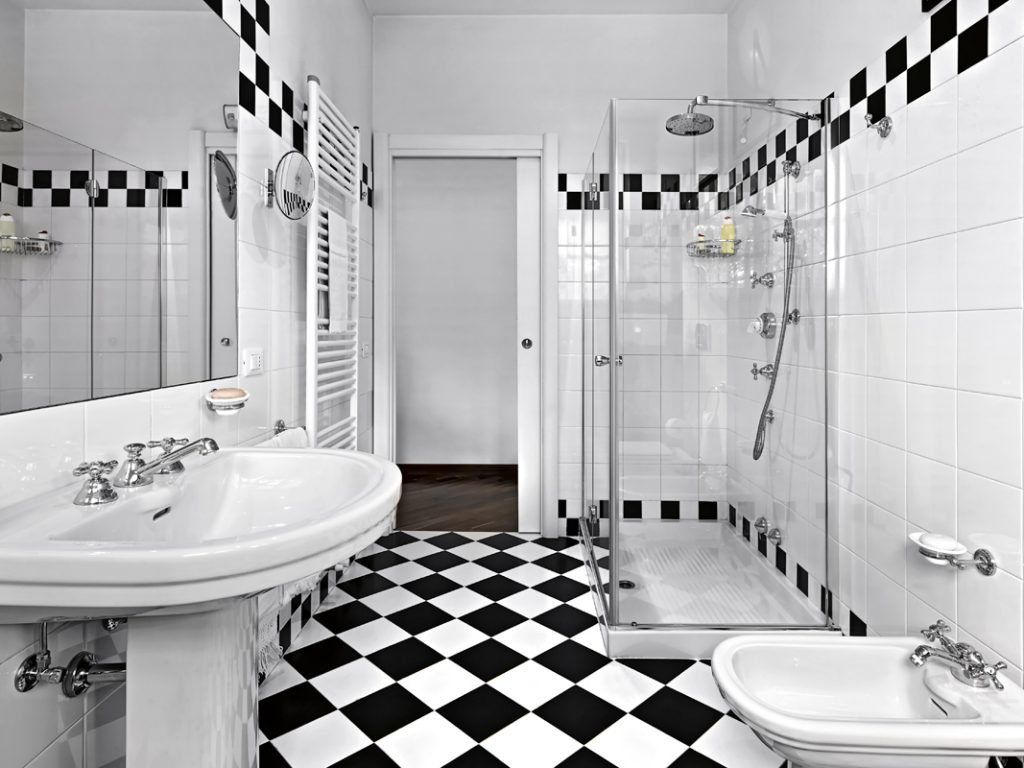The Most Popular Non-Slip Floor Treatments in Arizona Homes & Businesses

Slips and falls are to be take seriously especially when you think of all the areas where sudden wetness can occur. From bathrooms to patios, to pool decks, to entryways and kitchens. For many it an essential component of safety or for ADA compliance. Read on to learn more about the most popular options and when they work at their best.
1. Etching / Chemical Treatments (Surface Activated Treatments)
What it is:
A chemical or acid etch is applied to hard surfaces such as tile, natural stone, or terrazzo. It creates microscopically roughened surfaces by lightly etching the top to increase friction.
Pros:
- Very low visual change: floors look almost the same when dry.
- Works on many types of hard surface (porcelain/enamel, ceramic, stone, etc.).
- Durable, once applied correctly.
Cons:
- Some surfaces might react differently—stones with soft structure may dull slightly.
- Requires professional application.
MeasurAbilities provides etching-type non-slip treatments for floors, showers, tubs, patios, etc. Their process increases the coefficient of friction without obvious change in appearance. Measurabilities
2. Non-Slip Coatings with Aggregate Additives
What it is:
These are coatings (epoxy, polyurethane, acrylic, or resinous) that include anti-slip additives—sand, aluminum oxide, quartz, or fine silica—embedded into the coating.
Pros:
- You can get higher levels of grip, even in very wet or high-traffic areas.
- Often available in colors, gloss levels, etc., so you can preserve aesthetics or match design.
Cons:
- Might affect the “feel” underfoot (roughness), depending on how coarse the aggregate is.
- Maintenance may be harder—dirt can fill in the texture, needs cleaning.
- May cost more, especially for higher-traction or industrial-grade versions.
Arizona example: Companies like Sherwin-Williams offer non-slip safety coatings (ResuGrip line) for walkways, ramps, balconies, etc., with different textures depending on traffic and use. Sherwin-Williams Industrial Also, “slip-resistant epoxy and polyaspartic floors” are popular in garages and outdoor surfaces around Phoenix. Garage Floor Coating
3. Anti-Slip Treatments for Tile & Stone Surfaces (Topical / Impregnating Sealers)
What it is:
These are treatments applied to porous stones or tile surfaces to improve slip resistance. They may involve a honed or matte finish, and sealing the stone to protect it, plus topical agents that increase traction without altering the color or sheen dramatically.
Pros:
- Good balance of safety + appearance.
- For stone or marble floors, can preserve the material’s natural beauty while making it safer when wet.
Cons:
- Over time, the treatment may wear, especially in heavy traffic or outdoors.
- Periodic re‐treatment or resealing may be required.
Local example: Stone Care of Arizona offers anti-slip treatments for marble, travertine, limestone, porcelain, etc., using etching and honing, cleaning, then applying anti-slip formula. Stone Care of Arizona Also Beyond Stone Solutions offers such specialty topical treatments for stone/tile in Phoenix and statewide. Beyond Stone Solutions
4. Resurfacing / Texture Altering (Grinding, Sandblasting)
What it is:
For concrete or other hard outdoor surfaces (pool decks, walkways), surfaces can be ground, sandblasted, or mechanically abraded to introduce texture. Sometimes grooves are cut.
Pros:
- Very durable grip. Surfaces made this way often have good long-term traction even when wet.
- Good for exterior areas exposed to moisture and heavy usage.
Cons:
- Aesthetic may be more “rustic” or industrial depending on how aggressively textured.
- Might be rough on bare feet.
5. Non-Slip Mats, Tapes, or Overlays
What it is:
These are add‐ons: textured mats, removable or fixed overlays, adhesive non-slip tapes on stairs or ramps.
Pros:
- Low cost, easy to install.
- Can be temporary or moved as needed.
Cons:
- Not always aesthetically pleasing.
- May shift, curl, trap dirt or moisture underneath.
- Usually not acceptable for long-term or ADA/insurance requirements in commercial contexts.
What Arizona Conditions Demand
Because of our hot sun, monsoon moisture, and frequent pool or outdoor water exposure, durability is key. Treatments that:
- Resist UV damage
- Don’t degrade under hot sun or sudden water exposure
- Don’t become slippery when dust or sand covers them
are especially important here. Also, appearance matters: many homeowners want treatments that preserve sheen or color, especially indoors.
What MeasurAbilities’ Non-Slip Treatment Offers & Why People Pick It
According to MeasurAbilities, their non-slip treatment:
- Applies to many hard surfaces (ceramic, porcelain, stone, enamel, etc.). Measurabilities
- Produces increased traction even when wet, often exceeding safety standards from ADA/OSHA. Measurabilities
- Leaves no visible change in appearance for most surfaces—dry looks nearly the same but wet surfaces feel safer. Measurabilities
- Is non-toxic, environmentally safe, has quick application, with little to no downtime. Measurabilities
These features make it popular for bathrooms, patios/pool decks, kitchens, showers/tubs, etc.
Choosing the Right Treatment for You
Here are some tips for deciding:
- Match the surface type — Stone, tile, concrete all respond differently to coatings/etching/grinding.
- Traffic & water exposure — More traffic or frequent wetness calls for more aggressive treatments (coatings + aggregates or mechanical texture).
- Appearance priority — If you love polished stone, you’ll want treatments that minimize visible change.
- Maintenance plan — Keep surfaces clean so that texture isn’t reduced by buildup; reseal or re-treat if needed.
- Compliance & liability — If you’re a business or have aging individuals in home, meeting ADA/OSHA or insurance guidelines matters.
Bottom Line
Non-slip floor treatments are no longer limited to rough or ugly surfaces—they now include sleek, almost invisible options. Depending on where and how you live in Arizona, MeasurAbilities’ etching/treatment can give you safety, peace of mind, and minimal change in look. Whether for your pool deck, shower, kitchen, or aging-in-place setup, picking the right treatment means fewer slips—or worse—and more confidence underfoot.

